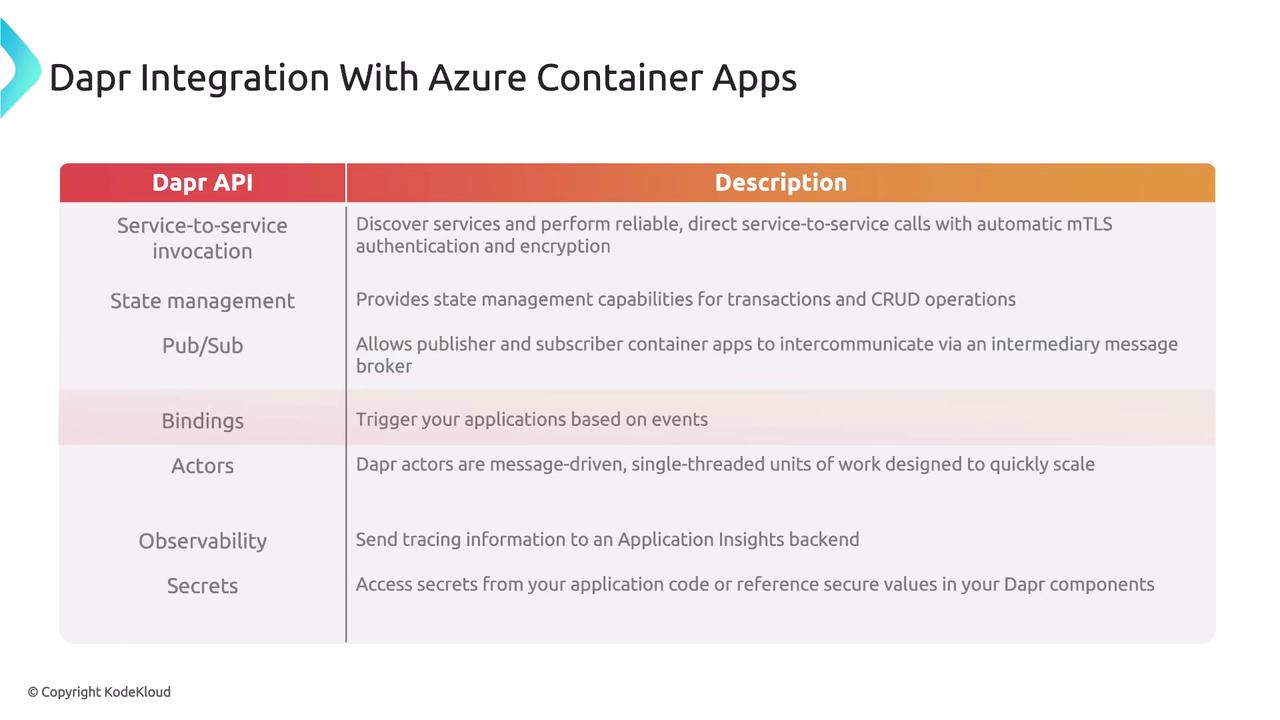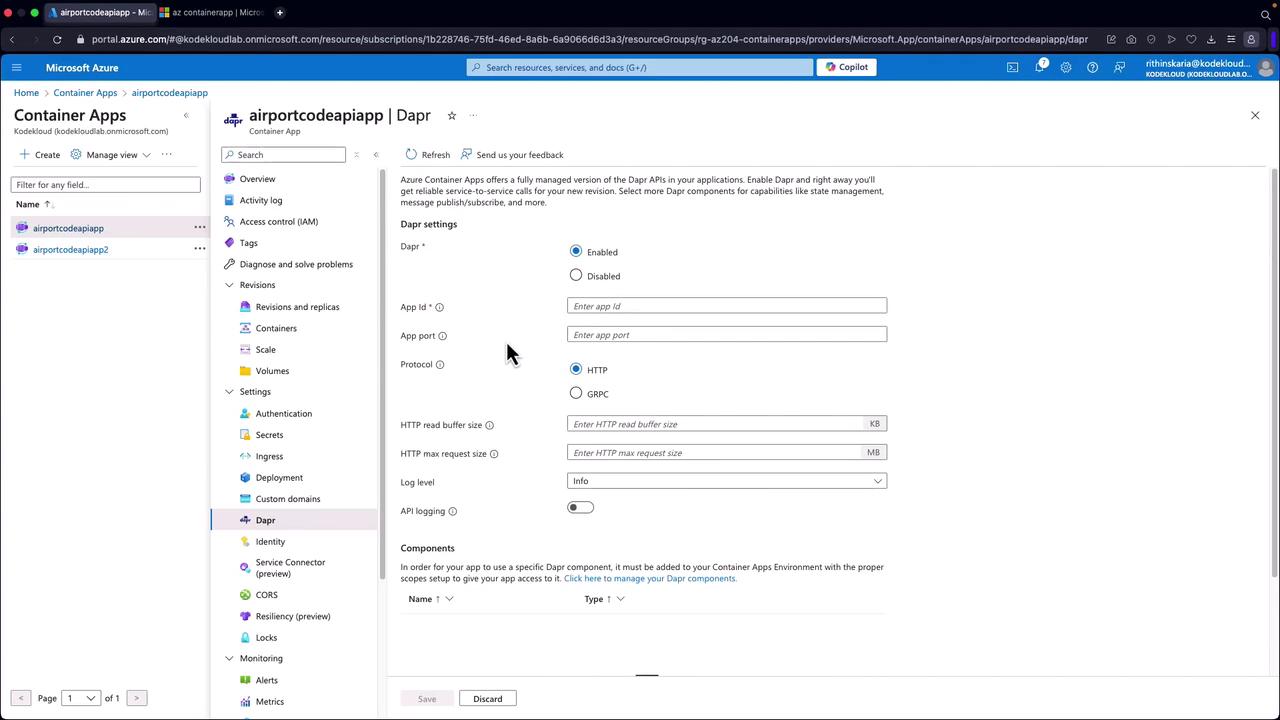AZ-204: Developing Solutions for Microsoft Azure
Implementing Azure Container Apps
Dapr Integration With Azure Container Instances
This article explains how Dapr integrates with Azure Container Apps to simplify the development and management of cloud-native microservices. Dapr (Distributed Application Runtime) is a portable, event-driven runtime that accelerates the creation of microservice-based applications, while Azure Container Apps offer native Dapr integration for effortless deployment, scaling, and management.
Overview
Leveraging Dapr with Azure Container Apps allows developers to focus on business logic by abstracting core microservice functionalities such as service invocation, state management, and secret handling.
Key Features of Dapr Integration
Dapr equips your microservices with essential building blocks that streamline inter-service interactions and operational monitoring. The primary features include:
| Feature | Description |
|---|---|
| Service-to-Service Invocation | Enables secure and reliable direct calls between microservices with automatic mutual TLS (MTLS) ensuring authentication and encryption. |
| State Management | Provides a consistent mechanism to manage state during transactions and CRUD operations without handling complex storage systems directly. |
| Pub/Sub API | Supports a decoupled, event-driven communication model using an intermediary message broker for asynchronous microservice interactions. |
| Bindings | Allows applications to react to external events from various sources like queues, databases, or other Azure services to trigger workflows. |
| Actors | Implements the Actor model to manage concurrency with single-threaded, isolated units of work that maintain state and simplify scalability. |
| Observability | Integrates native tracing and logging capabilities, sending data to monitoring tools like Azure Application Insights for performance insights. |
| Secure Secret Management | Facilitates secure retrieval of sensitive information from secret stores such as Azure Key Vault, eliminating the risks of hard-coded secrets. |

Detailed Feature Explanations
Service-to-Service Invocation
Dapr's service-to-service invocation API ensures that microservices can communicate reliably and securely. By leveraging automatic MTLS, every call between services is authenticated and encrypted, reinforcing the security posture of your distributed system.
State Management
Managing state becomes effortless with Dapr. Whether performing individual transactions or complex CRUD operations, Dapr abstracts the underlying state storage, ensuring consistency and reducing the boilerplate code needed to interact with databases or state stores.
Pub/Sub API
The Pub/Sub API in Dapr decouples microservices by enabling asynchronous message exchanges through a message broker. This capability is essential for building resilient, event-driven architectures where services react to events independently of one another.
Bindings
Bindings in Dapr enable applications to interface with external event sources effortlessly. They help trigger workflows based on events from queues, databases, or other service notifications, fostering a responsive and dynamic application architecture.
Actors
The Actor programming model in Dapr offers a simplified approach to concurrency management. By encapsulating tasks within single-threaded units known as actors, Dapr facilitates efficient state persistence and scalability, perfect for isolated or resource-intensive operations.
Observability
A robust observability mechanism is critical in distributed systems. Dapr integrates with tools like Azure Application Insights to provide comprehensive logging and tracing, aiding in real-time monitoring and performance optimization of microservices.
Secure Secret Management
Dapr enhances security by integrating with Azure Container Apps to provide secure secret management. This feature allows sensitive credentials such as API keys or connection strings to be retrieved directly from secure stores like Azure Key Vault, eliminating the need to include them in the application code.
Configuring Dapr in the Azure Portal
To enable and configure Dapr for your container app, navigate to the Azure Portal. In the Dapr settings, you can customize parameters such as:
- App ID
- Port
- Communication protocol (HTTP or gRPC)
- Buffer size
- API logging settings
This user-friendly configuration process minimizes setup complexity and expedites the integration of Dapr into your containerized microservices application.

Conclusion
Integrating Dapr with Azure Container Apps provides a robust framework to build, scale, and secure microservices efficiently. By harnessing features such as service-to-service invocation, state management, Pub/Sub, bindings, actors, observability, and secret management, developers can focus more on writing business logic and less on operational overhead.
See you in the next module.
Watch Video
Watch video content